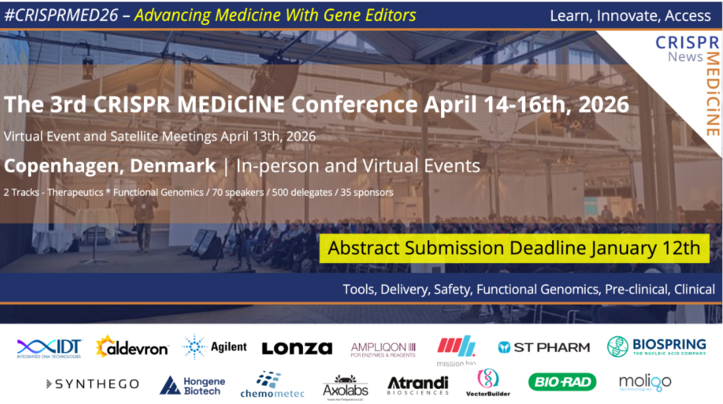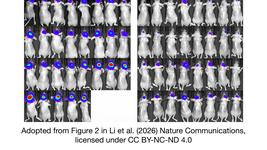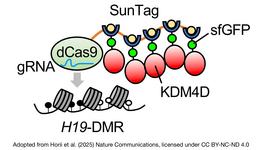CMN Weekly (26 September 2025) - Your Weekly CRISPR Medicine News
By: Gorm Palmgren - Sep. 26, 2025
CMN Intelligence - The World’s Most Comprehensive Intelligence Platform for CRISPR-Genomic Medicine and Gene-Editing Clinical Development
Providing market intelligence, data infrastructure, analytics, and reporting services for the global gene-editing sector. Read more...
Top picks
- Researchers in Austria have developed CELLFIE, a comprehensive CRISPR screening platform that identifies genetic modifications to enhance CAR T cell therapy for blood cancers. Through genome-wide screens measuring key T cell functions, they discovered that knocking out RHOG significantly boosts CAR T cell performance, with even greater effects when combined with FAS knockout. These genetically enhanced CAR T cells consistently outperformed standard versions across multiple models and patient samples, providing a powerful toolkit for optimising cellular immunotherapies.
- Intellia Therapeutics' phase 1 trial of nexiguran ziclumeran (nex-z), a one-time CRISPR gene therapy, achieved sustained 90-92% reductions in disease-causing TTR protein over 24 months in patients with hereditary ATTR amyloidosis with polyneuropathy. Most patients showed disease stability or improvement across multiple clinical measures, with the treatment being well-tolerated and causing mainly mild infusion reactions. These promising results support advancing nex-z to phase 3 trials for this rare, fatal neurodegenerative disease.
Research
- Scientists engineered a CRISPR-inspired ISCro4 bridge recombinase system for programmable human genome editing through targeted insertions, inversions, and excisions. Through systematic optimisation, they achieved 20% insertion efficiency and 82% genome-wide specificity, successfully moving DNA segments up to nearly one megabase in size. The platform shows promise for treating diseases by excising problematic genetic regions or repeat sequences.
- CRISPR-Cas9 was used to insert antibody cassettes into the immunoglobulin locus of rhesus macaque B cells, enabling sustained antibody expression. Editing efficiency was comparable in cells from healthy and SHIV-infected animals, with up to 10% of uninfected B cells expressing the transgene. This proof-of-concept supports B-cell editing as a strategy for long-term antibody delivery in chronic infections, such as HIV.
- Using CRISPR-based somatic genome editing, researchers modelled EML4-ALK lung cancers and found variant V3 is more oncogenic than V1. A multiplexed screen of 29 tumour suppressors revealed variant-specific effects on tumour growth, with pharmacogenomic analyses confirming genotype-dependent drug responses. Human tumour data supported these differences, showing that EML4-ALK variants function as distinct oncogenes rather than a single entity.
- Researchers generated a Ym1-deficient mouse using CRISPR-Cas9 on CB6 mixed-background embryos to overcome the gene duplication issues associated with C57BL/6 mice. Validation confirmed complete Ym1 loss without affecting related chitinase-like genes. This new model enables a precise study of Ym1's role in health and disease, showcasing a strategy for editing genes with strain-specific copy number variations.
- Researchers used base editing to introduce naturally occurring dominant-negative mutations in the FAS and TGFβR2 genes in primary human T cells, rendering them resistant to immunosuppressive signals in solid tumour environments. The base-edited CAR-T cells showed improved cytotoxicity, persistence, and reduced exhaustion markers compared to traditional overexpression approaches. This precise editing strategy offers a more efficient and multiplexable approach to engineer T cells capable of overcoming dysfunction in solid tumours.
- Swiss scientists have employed in situ sequencing to track CRISPR-Cas base and prime editing events directly within intact mouse and macaque tissues at single-cell resolution. It reports broadly uniform hepatocyte editing across liver metabolic zones with RNA-LNP delivery and shows that a second RNA-LNP dose does not diminish efficiency or alter spatial distribution.
- In a not yet peer-reviewed paper, researchers created a new mouse model that enables large-scale genetic screens in tumour-infiltrating T cells. Their CRISPR screens identified P2RY8 and GNAS as key regulators of T cell infiltration and function, with combined knockout of both genes significantly improving cancer immunotherapy across multiple tumour models.
- Researchers engineered a potent CRISPR interference platform by combining truncated MeCP2 domains with additional repressors and optimised nuclear localisation. The resulting construct, dCas9-ZIM3-NID-MXD1-NLS, achieved ~40–50% stronger gene silencing than conventional CRISPRi systems across multiple cell lines and targets. This multi-domain engineering strategy establishes a potent repressor for mammalian gene regulation and a framework for advancing CRISPR platform design.
- Researchers found that under physiologically relevant magnesium concentrations, Cas9's HNH domain cleaves the target DNA strand much faster than the RuvC domain cleaves the non-target strand. Testing Cas9 nickases against bacteriophages revealed that HNH-mediated target-strand nicking alone can provide immune protection, while RuvC nicking cannot. These findings suggest that rapid HNH cleavage may be sufficient for CRISPR immunity under physiological conditions, challenging the assumption that double-strand breaks are always necessary for bacterial defence.
Screening
- VECOS is a novel virus-encoded CRISPR screening system in which human cytomegalovirus encodes sgRNA libraries in its genome, allowing for the direct measurement of gene perturbation effects on viral propagation. Unlike traditional screens that rely on cell survival, VECOS tracks sgRNA abundance as viruses replicate, providing detailed insights into virus-host interactions across different infection stages.
- Researchers developed a high-throughput screening system to optimise CRISPR-associated transposons (CASTs), natural systems that can insert large DNA sequences into genomes with 88-95% targeting specificity. Through systematic mutagenesis of core transposition proteins, they identified mutations that enhanced CAST activity up to four-fold while maintaining specificity, revealing critical trade-offs between these parameters.
- CRISPR loss-of-function screens in CAR T cells for multiple myeloma have identified time- and context-specific regulators of persistence. Early advantages came from knocking out PTPN2, ZC3H12A and RC3H1, while CDKN1B emerged as the key late-stage brake on proliferation and function. Its ablation boosted expansion, cytotoxicity and tumour clearance, establishing CDKN1B as a prime target to enhance long-term CAR T efficacy.
Clinical and preclinical
- A lymphoma patient treated with BRL Medicine's BRL-201 has remained cancer-free for over five years, with no lasting adverse effects. BRL-201 is the first non-viral PD1-integrated CAR-T therapy, engineered using CRISPR-Cas9 to insert an anti-CD19 CAR into the PD1 locus, boosting efficacy while disrupting PD1. Broader trials confirmed high response rates, durable remissions and minimal toxicity.
Industry
- MaxCyte announced a restructuring that will reduce its workforce by approximately 34%, targeting $13.6 million in annual savings while focusing on core cell-engineering technologies. The move aims to streamline operations and accelerate profitability amid flat-to-declining revenues in 2025. The company expects year-end cash reserves of at least $155 million and will provide further financial updates in its Q3 earnings call.
- Ensoma has raised $53 million from investors, including Gilead, to advance EN-374, its in vivo HSC-directed therapy for X-linked chronic granulomatous disease. EN-374 uses virus-like particles to integrate a CYBB transgene via a transposon-based system (using Sleeping Beauty transposase and FLP recombinase), aiming to restore NADPH oxidase function. The funding supports Ensoma's Phase 1/2 trial and the expansion of its one-time gene insertion therapy platform.
- Boston-based Aera Therapeutics launched with $193 million in funding to advance genetic medicines using a novel delivery platform based on naturally occurring human proteins. Founded by Broad Institute's Feng Zhang, the company's protein nanoparticle system leverages endogenous human proteins that can package and deliver genetic therapies, potentially overcoming current limitations that restrict genetic medicines primarily to liver applications. Aera aims to expand the reach of genetic medicine across diverse tissues and diseases through this engineerable, human-derived delivery approach.
- Feldan Therapeutics received a CAD 1.5 million grant from Médicament Québec to advance its Feldan Shuttle platform, designed to overcome endosomal entrapment in RNA delivery. In collaboration with Université Laval and TransBIOTech, the project will integrate Shuttle technology with lipid nanoparticles to enhance the effectiveness of mRNA therapy, addressing a key barrier to RNA-based medicines and strengthening Québec's biomanufacturing ecosystem.
- Integrated DNA Technologies (IDT) has launched the Alt-R HDR Enhancer Protein, which boosts homology-directed repair efficiency up to two-fold in hard-to-edit cells such as iPSCs and HSPCs. Manufactured by Aldevron, the protein maintains cell viability and genomic integrity without raising off-target edits. Compatible with multiple Cas systems, it expands IDT's CRISPR toolkit, offering a scalable solution for precise therapeutic genome editing.
Detection
- Researchers from the Broad Institute and Princeton University have developed two innovative bead-based systems that significantly enhance CRISPR diagnostic tools, increasing sensitivity up to 20-fold while enabling the simultaneous detection of multiple viruses in a single test. One system, bbLuc, creates a light signal only when CRISPR-Cas13 detects its target. In contrast, the other, bbCARMEN, utilises colour-coded beads in droplets to illuminate only for matching viruses, enabling multiplexed detection. Also, read our take on the study.
Prizes
- Michel Sadelain, director of Columbia's Cell Engineering and Therapy Initiative, has received the inaugural Broermann Medical Innovation Award alongside Carl June for pioneering CAR-T cell therapy. Their work in engineering T cells with synthetic receptors has transformed the treatment of blood cancers. It continues to shape next-generation immunotherapies, marking a significant advance in translational cancer research. Michel Sadelain will be the keynote speaker at the 3rd CRISPR MEDiCiNE Conference, taking place from April 14 to 16, 2026, in Copenhagen.
Reviews
- Prime Editing in Mammals: From Promise to Practicalities. This review systematically examines the performance, efficiency, and variability of prime editing across different models, highlights reporter assays for detecting editing outcomes, and discusses downstream effects and factors influencing experimental success.
- Next-generation T cell immunotherapies engineered with CRISPR base and prime editing: challenges and opportunities. This review discusses how next-generation CRISPR 2.0 technologies, including base and prime editing, are being applied to engineer T cell therapies, highlighting their potential to enhance efficacy, safety and manufacturing while advancing towards clinical translation in cancer immunotherapy.
- Fueling chromosomal gene diversification and artificial evolution with CRISPR. This review summarises recent CRISPR-assisted methods for chromosomal gene diversification and artificial evolution, outlining their advantages, limitations, and future directions for improving endogenous variant analysis.
- Leveraging CRISPR/Cas9 To Overcome Hypoxic Barriers in Regenerative Dentistry. This review examines how CRISPR-Cas9-mediated modulation of hypoxia-responsive pathways can improve the survival, stress tolerance, and regenerative potential of dental pulp stem cells, highlighting both therapeutic opportunities and safety and translational challenges.
- CRISPR and Artificial Intelligence in Neuroregeneration: Closed-Loop Strategies for Precision Medicine, Spinal Cord Repair, and Adaptive Neuro-Oncology. This review examines the convergence of CRISPR genome editing and artificial intelligence as complementary tools to facilitate precision neuroregeneration, highlighting potential therapeutic applications, translational opportunities, and ethical considerations in CNS repair.
- CRISPR for detection of drug resistance genes. This review focuses on CRISPR-based molecular diagnostic systems for detecting drug resistance genes, highlighting their sensitivity, specificity, applications, technical challenges, and potential role in combating antimicrobial resistance.
To get more CRISPR Medicine News delivered to your inbox, sign up to the free weekly CMN Newsletter here.
“The European Genomic Medicine Consortium is quietly gathering under the CMN umbrella. Exploring the frontier of gene editing for therapeutic precision - this network is not public yet, but it’s real. Watch the signals, track the sequences. Only those who search will know.”R
Tags
ArticleNewsCMN WeeklyTransthyretin amyloidosis, ATTRCAR-TCRISPR ScreensAera TherapeuticsEnsomaFeldan TherapeuticsIntellia Therapeutics, Inc.
CLINICAL TRIALS
IND Enabling
Phase I
Phase II
Phase III
Gastric Cancer and Colorectal Cancer, CRC, (NCT07166263)
Sponsors:
Base Therapeutics (Shanghai) Co., Ltd.
Sponsors:
Base Therapeutics (Shanghai) Co., Ltd.
IND Enabling
Phase I
Phase II
Phase III
Relapsed or Refractory Acute Myeloid Leukemia, AML, (NCT06541444)
Sponsors:
Base Therapeutics (Shanghai) Co., Ltd.
Sponsors:
Base Therapeutics (Shanghai) Co., Ltd.
IND Enabling
Phase I
Phase II
Phase III







